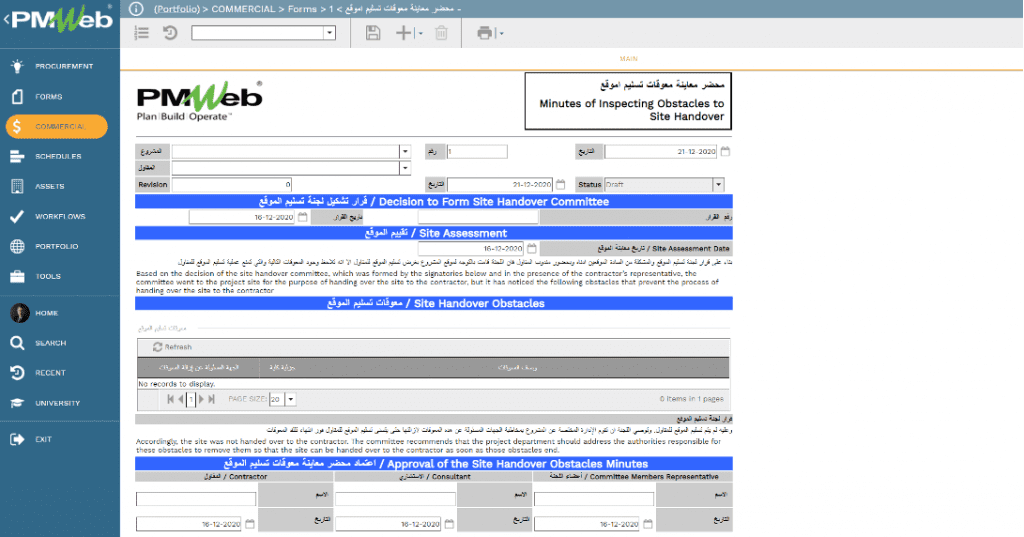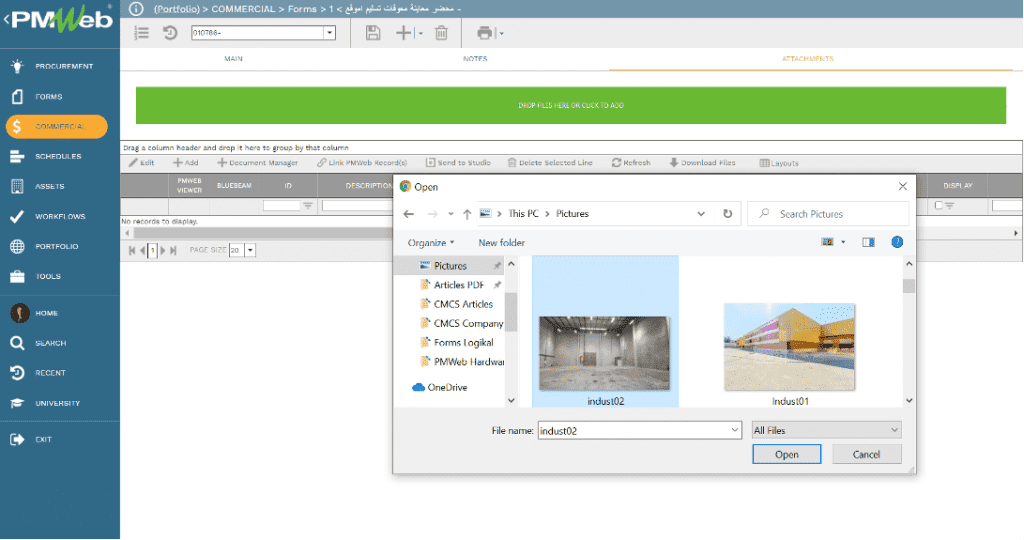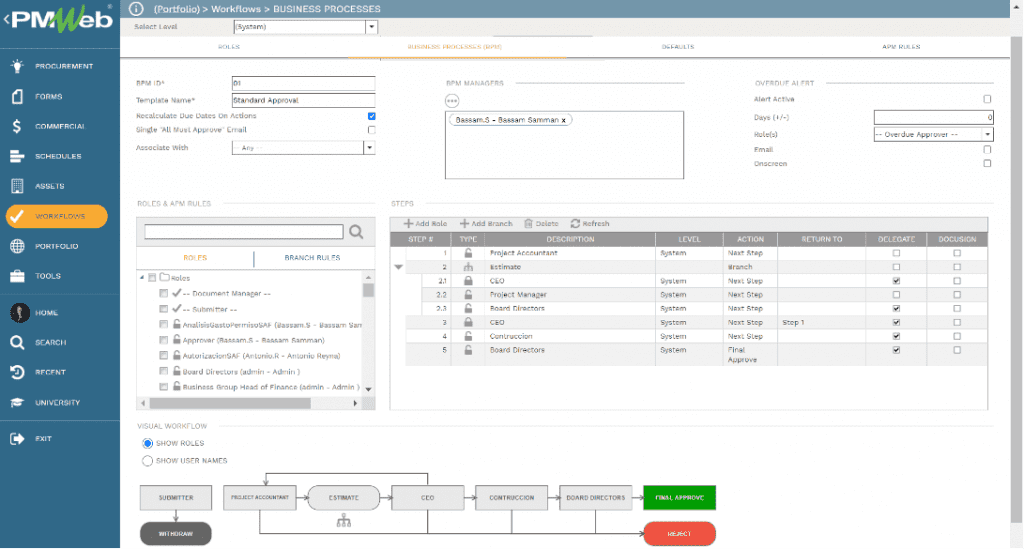Almost all construction contract agreements require the project owner to provide the contractor with access to the construction site that is clear of all obstacles that could hinder the contractor from commencing the onsite activities. This tends to be more challenging for project owners in the public sector, where other public sector entities could have objects or services that could represent an obstacle for the contractor. The project owner entity cannot remove those obstacles on their own, but rather need to coordinate with the entities responsible for those obstacles so they can be removed for the site handover.
Therefore, there should a formal process for documenting the current project’s construction site status listing all obstacles that could hinder the contractor from accessing the construction site as per the contract agreement requirements. The site handover process could include a committee representing the project owner entity, a representative from the supervision consultant, a representative from the project management consultant is available, and the contractor. In most countries, the details of those obstacles need to be documented in the formal language of the country as those need to be communicated with other public sector entities for which the country language is the language that is used for all formal communications. For example, in countries where the Arabic language is the country formal communication language, the form for the site handover should be in Arabic. To ease the communication on projects where the English language is also used between the contract entities, the site handover form could be done in both Arabic and English languages.
Using a Project Management Information System (PMIS) like PMWeb, where all project management processes will be managed, monitored, and evaluated, the site handover form will also be managed. Using PMWeb visual form builder, a bi-lingual form for “Minutes of Inspecting Obstacles to Site Handover” or “محضر معاينة معوقات تسليم الموقع” will be created. Although the form headers will be in Arabic and English nevertheless, all data will be added in Arabic. For the list of obstacles, the form could include two tables for reporting obstacles where the first will be in Arabic while the second will be in English. The content of both tables should be identical, and they will document the details of each reported obstacle, whether the obstacle is affecting the whole construction site or part of and the entity responsible for removing the obstacle.
The form will also include details on when the site handover committee was formed and the reference number of that decision. In addition, the form will include the date on when the site handover inspection was done, along with the details of those who were present during the inspection.

The site handover form will usually be accessed and completed using a smart mobile device like an iPad to allow capturing the details of all obstacles found on the construction site. In addition, this will enable the inspectors to take photos of all those obstacles and attach them to the form. For each taken photo, the note text field will be used to provide a description of the photo and the location of the obstacle shown in the picture. Those pictures can also be uploaded and stored in their designated folder in the PMWeb document management repository if needed.

Since the handing of the construction site clear from all obstacles to the contractor is a contractual obligation on the part of the project owner entity, it is highly recommended to add a workflow for this form to formally document the review and closure or approval of this process. PMWeb workflow can be designed to include all workflow tasks, their sequence, as well as how the form will be returned when obstacles are reported and how it will be resubmitted when all those obstacles are removed.




